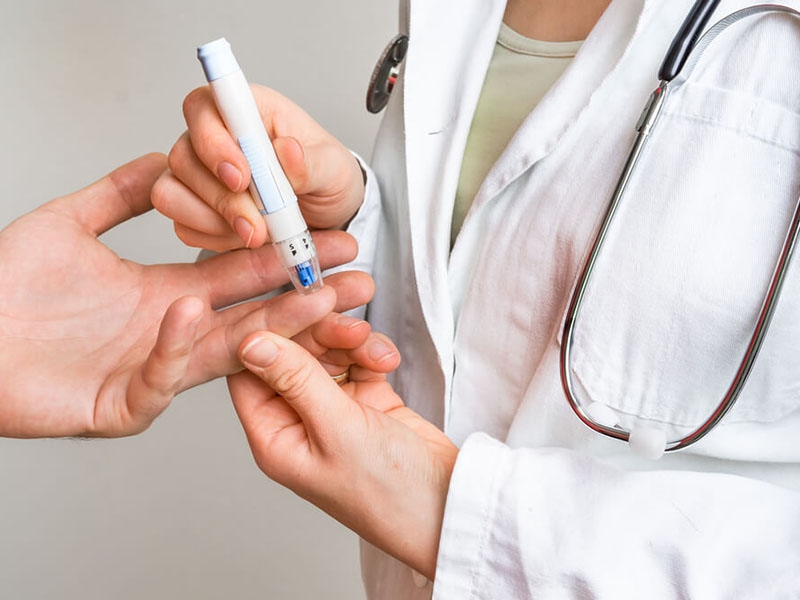
Fasting blood glucose
Watch our video about Fasting blood glucose
What is Fasting Blood Glucose?
Fasting Blood Glucose (FBG) is a diagnostic Blood test that measures the level of glucose (sugar) in the blood after a period of fasting, usually 8-12 hours. It provides critical information about how the body regulates blood sugar levels, which is essential for identifying and managing metabolic and endocrine conditions.
At Clinic Consultation, we offer accurate and timely FBG tests as part of comprehensive care for monitoring and diagnosing blood sugar-related health issues. This simple test is a cornerstone of diabetes management and preventive healthcare.
What is Fasting Blood Glucose Used For?
The primary purpose of the FBG test is to evaluate blood sugar levels and diagnose conditions like diabetes or prediabetes. It is also used to monitor blood sugar control in individuals already diagnosed with diabetes.
In addition to diagnosing diabetes, FBG tests are used to assess the risk of developing complications related to abnormal glucose levels. By identifying issues early, patients can adopt lifestyle changes or medical interventions to maintain optimal health.
How Does Fasting Blood Glucose Work?
To perform the FBG test, a small blood sample is taken from a vein in the arm after the patient has fasted overnight. The sample is analysed in a laboratory to measure glucose concentration.
The fasting period is crucial, as it ensures that the results reflect the body’s baseline glucose level without the influence of recent food or drink. The procedure is quick and minimally invasive, with results typically available within hours. At Clinic Consultation, our team ensures a seamless and comfortable experience during blood collection.
What Are the Types of Fasting Blood Glucose?
While FBG generally refers to a single test, it is often used alongside other related tests for a more comprehensive understanding of glucose regulation:
Standard Fasting Blood Glucose Test
Measures baseline glucose levels after fasting. Results help diagnose diabetes, prediabetes, or hypoglycaemia.Oral Glucose Tolerance Test (OGTT)
Often combined with FBG, this test evaluates how the body processes glucose over time by measuring blood sugar levels at intervals after consuming a glucose-rich drink.HbA1c Test
Though not a fasting test, HbA1c complements FBG by measuring average blood sugar levels over the past 2-3 months, providing a broader view of glucose control.Fasting Insulin Test
Measures fasting insulin levels alongside glucose to evaluate insulin sensitivity or resistance.Random Blood Glucose Test
Performed without fasting, this test is less precise than FBG but useful in acute settings to assess blood sugar levels.
Each of these tests provides valuable insights into glucose regulation and metabolic health, and at Clinic Consultation, we ensure the appropriate combination of tests is chosen based on individual needs.
What Conditions Can Be Detected Through Fasting Blood Glucose?
FBG tests can help detect several conditions, including:
Diabetes
Identifies high blood sugar levels, the hallmark of diabetes.Prediabetes
Detects elevated glucose levels that indicate a risk of developing diabetes.Hypoglycaemia
Diagnoses abnormally low blood sugar levels.Metabolic Syndrome
Evaluates blood sugar as part of a cluster of risk factors for heart disease and diabetes.Gestational Diabetes
Identifies diabetes that develops during pregnancy.Pancreatic Disorders
Detects abnormalities in glucose regulation caused by pancreatic conditions like pancreatitis.Endocrine Disorders
Evaluates glucose levels in conditions like Cushing’s syndrome or acromegaly.
When is Fasting Blood Glucose Indicated?
FBG tests are recommended in various scenarios, including:
Routine Screening
For individuals over 45 or those with risk factors for diabetes.Symptoms of High Blood Sugar
Such as increased thirst, frequent urination, or unexplained weight loss.Family History of Diabetes
To monitor glucose levels in individuals with a genetic predisposition.Monitoring Diabetes Management
To assess the effectiveness of treatment plans.Obesity or Overweight
To evaluate the risk of developing diabetes or metabolic syndrome.Pregnancy Monitoring
As part of routine prenatal care to detect gestational diabetes.Evaluation of Other Health Conditions
Such as cardiovascular disease or polycystic ovary syndrome (PCOS), where glucose regulation plays a role.
Pre- and Post-FBG Test Care
Before the Test:
- Fast for 8-12 hours, avoiding food and drinks other than water.
- Inform your doctor about any medications, as they may affect blood sugar levels.
After the Test:
- Resume normal eating and activities immediately.
- Discuss the results with your doctor to understand the implications and next steps.
What Are the Contraindications for Fasting Blood Glucose?
FBG tests are generally safe, but certain factors may affect accuracy:
- Recent illness or stress, which can temporarily raise blood sugar levels.
- Medications, such as corticosteroids or beta-blockers, that influence glucose levels.
- Conditions affecting fasting ability, such as pregnancy-related nausea.
At Clinic Consultation, our specialists evaluate each patient’s situation to ensure accurate testing and interpretation.
What Are the Alternatives to Fasting Blood Glucose?
For patients unable to fast, alternative tests include:
- Random Blood Glucose Test: Measures glucose levels without fasting.
- HbA1c Test: Provides an average of blood sugar levels over time.
- Continuous Glucose Monitoring (CGM): Tracks glucose levels throughout the day and night.
Our team at Clinic Consultation helps determine the best testing approach based on individual circumstances.
Book Your Fasting Blood Glucose Test at Clinic Consultation
Fasting Blood Glucose testing is a vital tool for managing and monitoring blood sugar levels. At Clinic Consultation, we offer expert care and accurate testing to support your health journey. Schedule your FBG test online today and take control of your metabolic health.
Click here to schedule an appointment online